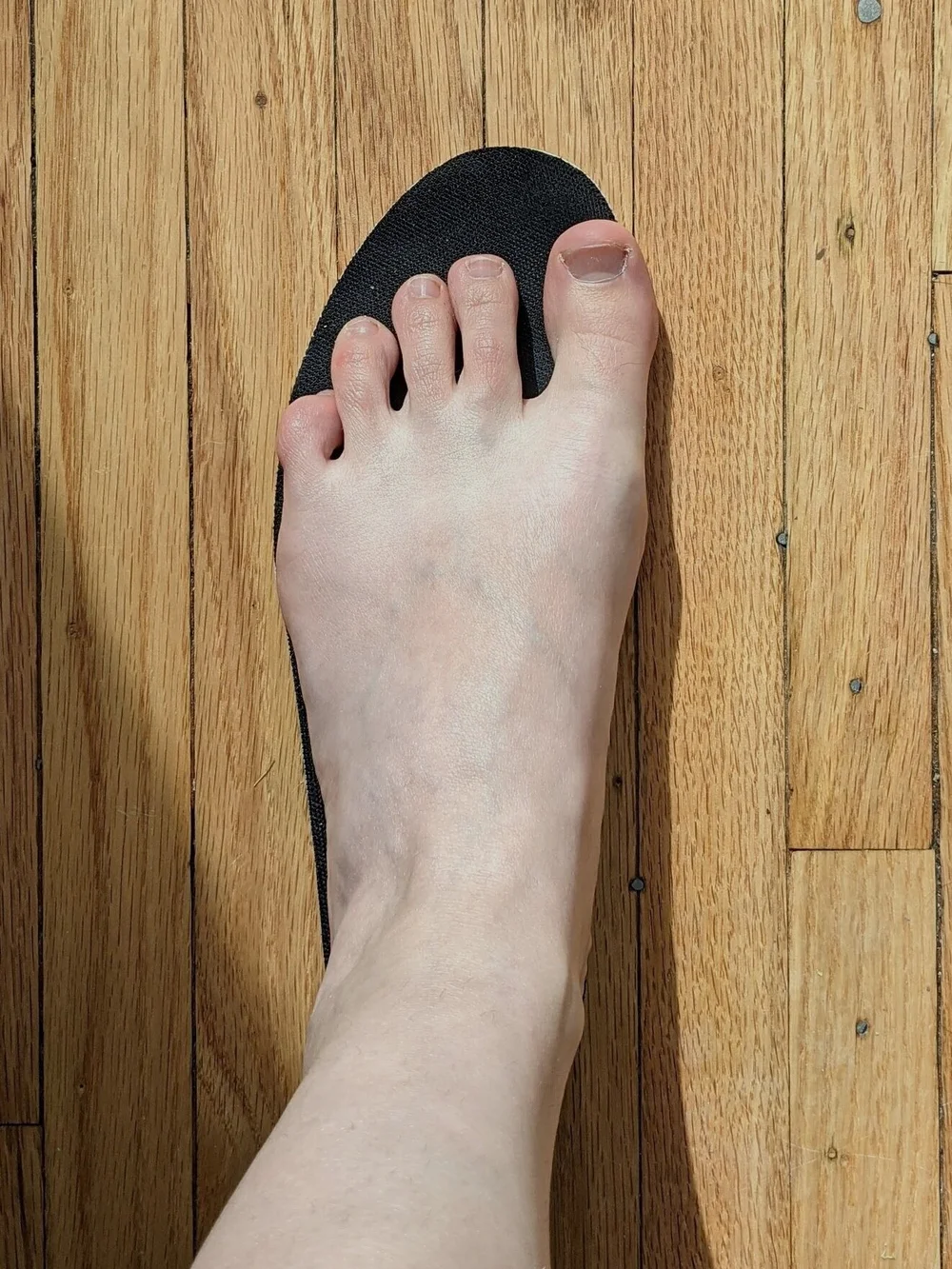By: Waterloo Physiotherapist Sayaka Tiessen
No, I’m not talking about this season’s hottest Balenciagas, and I’m not even going to get into the carbon plated shoe thing. (Side note: a lot of interesting studies about their efficiency have come out, as have some important discussions about equity in sport.)
We are going to just have a straight talk about your running shoes – what to look for when buying, how to screen for lemons, and injury considerations. Get ready to nerd out!
What to look for when buying
- What is the purpose of the shoe you are looking for?
- A trail shoe for grip and stability? A plush road runner for pounding the pavement? A racing flat or track spike to break the speed of sound? Know what you are looking for to help narrow your search.
- Stability shoe or neutral? Or dare I say, minimal? This is a complicated question and one where I would look at your previous shoe history and maybe stay within it, unless a change is recommended by your health professional. For example, I know people with pancake flat feet who were put into a stability shoe and it caused more problems for them, so having flat feet DOES NOT mean you need a “motion control” shoe. If you have orthotics, you should go with a neutral shoe 100% of the time so that it can function the way it should. Perhaps get your feet checked out by your health provider if you are in doubt.
- Shop when your feet are the largest, and bring anything you typically would have on your feet when you run
- Your feet tend to get a smidge larger as the day goes on, so plan your trip to your local running shop for the afternoon or later in the day if you can.
- BYOS – bring your own socks, specifically the types of socks you would wear while running. This will give you a much more accurate feel for the shoe and fit. If you wear orthotics, an ankle brace, or special heel lift in your runners, bring them!
- Brand loyalty is ok to a point, but keep an open mind (unless you are sponsored, which I am not).
- Most companies will tweak their models with each new iteration – new foam! a different upper! a whole new last! There is no guarantee that a shoe will be the same from year to year, meaning it might not provide the same type of ride.

How to screen for lemons
Sometimes life gives you lemons, and that’s ok if you know how to screen for them to avoid being saddled with a pair of defective shoes. You might get some odd looks if you try these in the store, so bring the shoes home, and in a reasonable, non-Hulk manner, put them through their paces.
The video posted below is a sequence of tests developed by physiotherapist Bruce Wilk. Some of my favorites are:
- The Break Test: This is to see if the shoe breaks at the level of the toes and not in a weird place like the mid foot. It shouldn’t be overly stiff either. This does not apply to minimalist shoes as they will fold up like a piece of origami.
- The Twist Test: Mostly looking for symmetry here
- The Rock Test: This is to see if the shoe is sitting evenly on the surface. Press straight down and apply a bit of a rock left and right. Does one shoe start tilting a lot?
What if I’m injured?
There are some footwear considerations when it comes to dealing with injury. I will mostly be talking about drop, which is the height difference between the heel and the toes. Most shoes will describe the drop in mm. Below are a few considerations about heel-toe drop and how it might play into injuries. These are generalizations, so take it with a grain of salt!
Zero Drop (aka a flat bottom, not necessarily no cushioning. Remember, we are talking about the difference in height between the heel and toes)
- Places more stress on feet, ankles, and the Achilles, so if you have any issues in these areas, it might be best to avoid this type of shoe.
- Good if you are dealing with knee issues, or have a stiff first toe because the shoe won’t bias you into slight extension.
- If you are new to zero drop shoes, it is important to gradually introduce them into the shoe rotation because you will probably get tight calves when you start using them.
Regular Runner with a Drop (the vast majority of shoes)
- Places more stress at the knee, so if you have cranky knees, consider avoiding this type of shoe.
- Good if you are dealing with an Achilles injury, or plantar fascia pain because it will put your posterior chain on some slack.
Cushioning or Barefoot/Minimal?
- Cushioning is best if you are: recovering from an injury (notably any bone stress injury, plantar foot pain), have osteopenia or osteoporosis, are new to running, or are planning on doing the vast majority of your runs on pavement*.
- Barefoot is something you can work towards if that is what you are interested in. I know people that love the tactile sensation that going more minimal gives them. *you can run in barefoot/minimalist shoes on pavement, but you must give your body time to adapt to the stress.
THE TAKEAWAY?
The most recent studies suggest the best shoe for you if the shoe that FITS, meaning you won’t subconsciously change your gait to avoid that nasty blister on your toe. I know you love that hot new colourway from (insert whatever brand here), but if it has a weird break pattern, or it feels uncomfortable in the shop, it is highly unlikely to EVER be comfortable. Take it from me – I have made that mistake a few times in my career.
Give this post a share with anyone you know who is eyeing up a new pair of kicks. Live in the Kitchener-Waterloo area, dealing with a running injury and want to get a plan in place? Book your appointment here.

Comments are closed here.